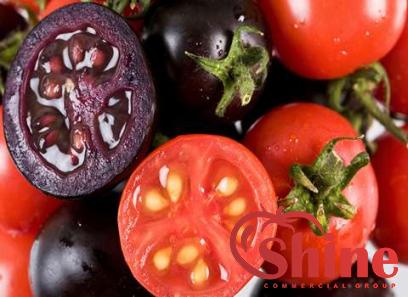Tomato Paste Aseptic Price + Wholesale and Cheap Packing Specifications
If you want to export tomato paste, it is quite necessary to learn the processing of aseptic in the packaging
This process would definitely help the product to remain healthy outside the refrigerator
Product packaging is often referred to as “aseptic,” however the term more accurately refers to the process of disinfection
A product’s longevity is improved by being aseptic
After going through the aseptic process, the packed commodity can be stored at room temperature without refrigeration
Foods like milk, yogurt, eggs, etc
, can be frozen using this method instead of conventional methods

The goal of sterilization, sometimes known as commercial septic, is to cut down on the population of living organisms, at least to some degree
The reduction of microorganisms is logarithmic, and if they are to be We need an infinite time to bring it to zero
However, the most important function of the aseptic method is to use higher temperatures for a shorter period of time in order to better preserve the product’s quality, nutrients, texture, color, and other qualitative characteristics
As you are aware, it is not possible to destroy microorganisms completely
The reason for this is that the reduction of microorganisms is the logarithm
the aseptic steps There are three main steps in the aseptic procedure
Product sterilization through heat sterilizing the packaging continue to sterilize while packaging Background of Packaging History demonstrates that there was no need for food packing at the dawn of human civilization since people would migrate from place to place in search of food until they found permanent homes
They were forced to gather food from various locations and get it to their home in such a condition
Due to this need, dried pumpkins, shells, leaves, animal skins, and other natural materials were employed as the first forms of packaging

Animal skin was used to convey liquids including milk, buttermilk, yogurt, and oil
Animal horns were utilized to carry and store food as well as agricultural goods
packing Today, the importance and role of (aseptic) packaging as an intermediate between the manufacturer and the customer is critical
The research on this topic indicates the huge impact of the packaging sector in raising sales and, more importantly, making a higher profit for the unit
are works of art
On the other hand, ignoring the design of the package can cause significant, and often irreversible, damage to the manufacturer, even if the best and highest-grade raw materials are utilized
Manufacturers are currently attempting to solve packaging problems on their own, despite the lack of a strong specialized center in the field of packing that can have a good connection with the industry
It is one of the most crucial and required components of the product, introducing and sustaining it from manufacture to consumption
Packaging design science is the art and technology of protecting products from the point of manufacture to the point of consumption
After production and packing, a product typically goes through the stages of storage, storage, transportation, distribution, storage, and sale
The least advantageous aspect of packaging is that it causes the least amount of damage to the product content from manufacture to consumption, as well as to the environment
Packaging stages include the design stage, the assessment stage, and the packaging production step
If we look around, we will see several types of packaging
From food and medical packaging to packaging for other consumer and industrial goods

Another sort of packaging is known as strategic packaging, and it is used to package petrochemical materials
Packaging’s primary function is to safeguard the goods
The majority of packages include a standard label that informs us about the goods within
Furthermore, the conventional packaging provides storage guidelines and, in some cases, the expiration date of the product
Aseptic or bulk packaging is a method of packaging used by some tomato paste companies
They are dispatched to manufacturers where tomato paste is packaged in tins and jars
Aseptic packing is a method that extends the shelf life of the paste when it is not refrigerated
There is no requirement for aseptic kinds, but mass materials must be kept cool
We are a global firm and we have Aseptic Brix 38-36 tomato paste in a new brand barrel that can be shipped anywhere in the world

tomato paste aseptic packaging
When it comes to the packaging of tomato goods, particularly tomato paste, an aseptic method is essential
In point of fact, this procedure contributes to the extended shelf life of the product
You may have heard aseptic many times in the food industry
Aseptic or in other words, aseptic is one of the production processes in the food industry that can create a feature in the product that does not need a refrigerator
In a word, an indie oven is a product that is packaged in such a way that it does not need to be stored in the refrigerator
The process is widely used in liquid foods such as milk, fruit juices, concentrates, purees, and even for foods containing small particles such as cheese, meat products, fruits, and vegetables
The word septic is derived from the Greek language and means clean and free from germs
The usage of polyethylene and aseptic packaging is extremely widespread in today’s marketplace across a wide variety of product categories
Since we are primarily an exporting organization, it is vital that we have access to this kind of packaging
We send significant quantities of our wares to many nations throughout the world as exports
As a consequence of this, it is of the utmost importance for us to have a system that allows our product to be kept for a considerable amount of time outside of the refrigerator
The significance of this procedure cannot be overstated for businesspeople who wish to buy tomato paste in large quantities so that they can repackage it in a variety of containers for sale to end users

It is possible to use this material for sterile packaging because it is capable of being sterilized by high heat, which is one of the most significant characteristics of aseptic materials when they are used as packaging
This type of packaging offers several benefits
Because it is non-toxic and maintains its effectiveness even at low temperatures, aseptic is immune to the effects of germs, and it also stops contamination from getting into the package
Stay with us until the end of this post if you are interested in learning more about aseptic packing; this is because we want to do an in-depth investigation of the aseptic
There are many benefits that come with utilizing aseptic packaging The use of aseptic techniques for packaging has many benefits, including the following: Packaging that is considered sterile due to its isolation and other special conditions during the aseptic manufacturing process is called sterile packaging
It is not poisonous, and its contents of it do not present any difficulties
It works well even when the temperature is low
One of the types of material that possesses high chemical stability is known as aseptic
The fact that aseptic is electrically insulating contributes to the material’s overall usefulness
Aseptic packaging is utilized in a variety of manufacturing processes, including those listed below on account of the qualities described above: Raw materials and solids that are aseptic When it comes to the packaging of medical supplies, maintaining the sterility of the packaging is of the utmost significance for these items
The preparation of sterile packaging for a variety of other products, including food and cosmetics

In addition to that, it is suitable for the short-term storage of chemical products and pharmaceuticals
Packing is a widely used approach for extending the shelf life of both liquid and dry food products
The aseptic packaging system relies heavily on the pasteurization of food packaging products and food contact points
Chemical, heating, and radiation sterilization techniques are all commonly used
When it comes to aseptic packaging, H2O2 sterilization accompanied by hot air is by far the most common technique
Hydrogen peroxide, accompanied by ultraviolet (UV) irradiation and heat, has been accepted for engineering scale and is expected to grow in popularity for sterilizing packaging materials prior to aseptic processing and packaging
Sterilization by dry heat is not recommended for products housed in a plastic or other heat-sensitive containers
Paper-based packaging materials are typically sterilized with hot air, while metal food contact surfaces are typically treated with saturated steam
When it comes to aseptic packaging, the mixture of peracetic acid, hydrogen peroxide, and heat for sterilizing food contact surfaces is also worthy of consideration
Aseptic packaging systems frequently use light pulse technology as a non-thermal method of sterilizing packaging materials and equipment surfaces
Due to the high price and non-uniform dose shipping to preformed packages, ionizing radiation is not profitably put in place in line with aseptic manufacturing
Companies are currently attempting to switch from synthesis methods to new nonthermal methods for sterilizing packaging materials
These nonthermal methods include light pulse, UV laser light, -rays, electron beams, and plasma discharge
Prior to in-line sterilization of food manufacturing equipment and food contact surfaces, the most crucial steps are the layout of cost-effective automated systems and sterilization procedures of these techniques

tomato paste aseptic process
We have provided comprehensive information about tomato paste products on the official website of our company
You can also follow the detailed process of septic packaging from our website
Tomato paste is one of the most widely consumed foods
The production and export rate of this product is increasing
It is very important how and with what kind of packaging this product is shipped in large volumes from the manufacturer to the wholesaler who is in another region of the world
Thanks to technological advances, aseptic packaging has been introduced to make this possible
Aseptic packaging is not only used for tomato paste but also for packaging other food products
Steps in aseptic packing The aseptic packaging process generally involves the following steps:
cleaning of raw materials
Clean the package
sanitization of the tools
Filling containers with food under sterile circumstances
putting caps on in sterile settings
Distribution and storage in sterile circumstances
a technique for stealing food for aseptic packing
a technique for stealing food for aseptic packing
Sterilization in aseptic processes refers to industrial sterilization
The reduction of germs is the primary goal of heating materials during commercial sterilization
It is basically not possible to entirely remove microbes
Due to the fact that the decrease of microbes is a logarithmic function and requires infinite time to reach zero, it is practically impossible

The quality of the food, its texture, color, and other attributes are retained in this procedure better than in other ways because a very high temperature is employed in a short period of time during the aseptic process
principal characteristics of aseptic packing packages The following qualities must be present in all aseptic packing materials: Can be sterilized; resistant to the passage of water, gases, volatile chemicals, and light
being appealing to the client Capability of covering Advantages of aseptic packaging In recent years, the number of requests from manufacturers to use aseptic packaging in different product lines has increased; According to the forecast of Freedonia Group, the demand rate for this type of packaging will grow by 6
8% and its revenue will reach 6
4 billion dollars in 2020
Therefore, the use of Aseptic in the packaging industry brings many advantages; For example, we can mention the following: Increased shelf life Aseptically packaged products will last longer; Because this type of packaging protects its contents for between 6 and 12 months without the need for refrigeration

Therefore, producers have more time to sell their products, and on the other hand, customers can keep the purchased items for a while; without worrying about spoilage and the expiration date of the product
Reducing the cost of distribution and transportation The ideal temperature for keeping aseptic packaging is between 20 and 25 degrees Celsius; So, there is no need for advanced technology and permanent cooling, and the cost of transportation is reduced
Experience the different tastes of tomato sauces with our products









